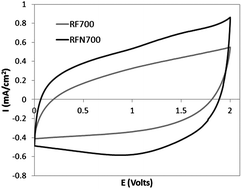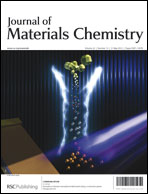Nitrogen modification of highly porous carbon for improved supercapacitor performance
Abstract
Nitrogen is added to porous carbon, in both the bulk network as heteroatoms and coated on the surface of the pores, to increase the capacitance of electrodes for supercapacitor applications. Surface modification increases the amount of nitrogen by four times when compared to unmodified carbon that only contains nitrogen in the bulk. Pyrolysis of the modified carbon at a lower temperature also retains up to three times more nitrogen than high temperature pyrolysis. The surface modification dramatically improves the wetting behavior of the porous carbon and produces a capacitance that is nearly twice that of the unmodified carbon through a combination of double-layer formation and pseudocapacitive reactions.


 Please wait while we load your content...
Please wait while we load your content...